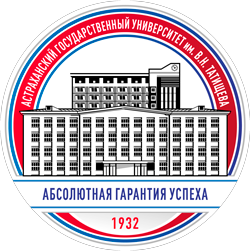Description of the strategic project: A comprehensive strategic project, aimed at rebooting the university in the field of science, innovation and education, has four related areas focused on achieving a unique result – Russia’s leadership in the field of marine robotics, crewless ships and A-navigation. This activity is carried out in accordance with the logic of the MariNet roadmap, with the support of the Caspian Distributed Center “MariNet”; the project is a key one for the National Technology Initiative (NTI). A detailed description of the strategic project is set out in Appendix 1.
Purpose of the strategic project. To create an innovative product based on a full scientific and technological cycle that ensures global competitiveness in the field of marine robotics and creation of an end-to-end HR training cycle for the marine robotics industry; it is designed for industrial and environmental monitoring, search for biological resources, geophysical research in transit areas, bathymetry, automated depth measurements.
Objectives of the strategic project
Education block: creating network EPs within participation in consortia “University Consortium for World Ocean Studies” and “Shipbuilding and Marine Engineering”; ensuring academic mobility of students in the logic of the project and in the structure of university associations; creating and implementing AEPs in the logic of the project and placing them on online platforms; creating training laboratories and specialized classrooms (including a situation center with the monitoring output, including data of the earth remote sensing in the water areas covered by MRs); making changes to the EPs for including online courses of the partner universities.
Science and innovation block: conducting research, including within the framework of the consortia; attracting end customers to the project and its promotion on Russian and international platforms, including on e-trading platforms; managing the supply chains and product lines; bringing the project to the international market, including drawing up proposals for creation of non-residents in the EU, Asia-Pacific countries and the USA; holding all-Russia competitions in marine robotics in accordance with accepted international classes for autonomous surface vessels.
Engineering block: building digital twins of MRs and conducting virtual tests; manufacturing technological equipment and pilot industrial samples of MRs; conducting tests in the test water area to obtain certification and autonomy level assignment; designing a max MR in accordance with the rules of the Russian Maritime Register of Shipping; operating prototypes in the specified water areas; developing and maintaining software and hardware systems installed on MRs and in the MR control center to ensure safe navigation conditions; preparing documents for certification of products (underwater robots, unmanned aerial vehicles integrated on MR board).
Expected results of the strategic project. The global result is to build an innovative facility for MR production. With the cost of robots ranging from 16 to 60 million RUB (depending on their configuration), the volume of earnings for the given production volume will be from 800 million RUB up to 3 billion RUB. Implementation of the strategic project at the university level will provide conditions for an experiment on pilot operation of MRs in the Caspian basin; it will generate demand for the use of MRs for industrial and environmental monitoring, research in the field of aquatic ecosystems; it will significantly increase the number of studies and publications on the priority scientific topics of the university; it will form end-to-end training of MR specialists for the maritime industry in Astrakhan Region, thereby making regional educational programs unique; it will ensure the funds attracted in R&D in comparison with the leading universities of Russia. At the national level, it will allow for a consistent transformation of marine research using MRs, thereby ensuring Russia’s leadership in this area. The joint use of traditional research vessels and MRs will significantly expand the research potential of Russian scientists.
